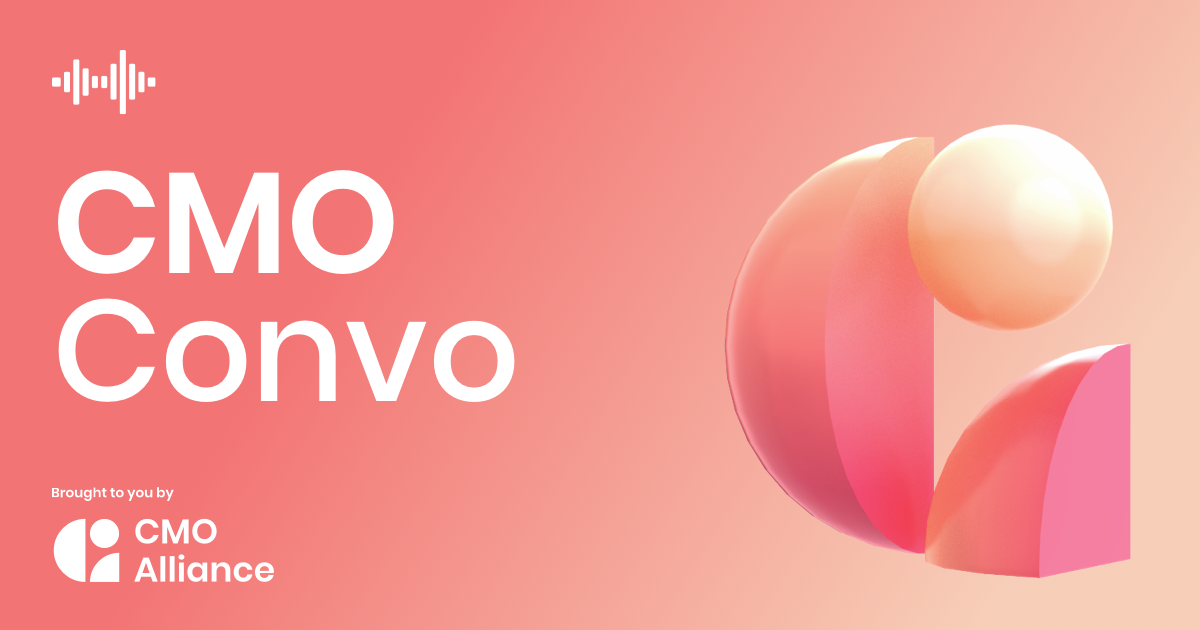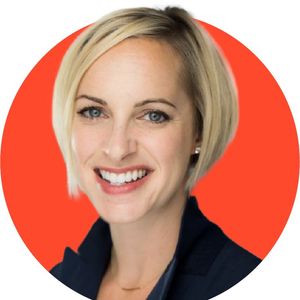Any customer marketer worth their salt knows that paying attention to customer feedback is key to success. But how can we make leading with the customer a cross-departmental mission?
Amanda Malko, CMO of G2, one of the world’s leading peer-review service providers, sat down with Will Whitman for an episode of our sister site’s podcast CMO Convo to share her insights on the benefits of customer-led growth and how you can implement it in your organization. =
About Amanda
Amanda Malko is an award-winning go-to-market leader who thrives on leading high-performing, cross-functional teams. Her career focus is on hyper-growth companies working at the intersection of marketing, creativity, and technology.
She’s the CMO of G2, the world's largest software marketplace, reaching more than 60M software buyers every year, and is a regular advisor to SaaS startups each year. Before joining G2, Amanda led the Partner Program and Academy at Mailchimp. She has also served as CMO of 360i and Tongal and been Head of Marketing for IgnitionOne.
Q: What is customer-led growth?
A: Reviews are a great place to start thinking about customer-led growth. If you’re shopping on Amazon, you probably have a review strategy where you compare what people are saying about different products before you decide what to buy. It’s an inherent part of how we shop today.
It's not far-fetched to think that in your business life you’re going to behave in the same way. You want to know what your peers are thinking and use that trusted customer voice to guide your decisions on, say, what software to buy. Customer-led growth means paying attention to this feedback and using it to drive your organization, and it can apply to any business, whether it's B2B or B2C.
At its core, customer-led growth is about leading with the voice of your customer and using it to shape everything from how you build your product to how you go to market.
That means starting from the perspective of your customer, not your own organizational perspective, or the perspective of your product. While we all know that we should be keeping the customer in mind at all times, putting that knowledge into practice across the entire organization is a bigger challenge.
Q: What advantages can customer-led growth bring to your organization?
A: If you can define what customer-led growth means across your organization, it's going to result in better products, better marketing experiences, and better sales experiences – better experiences across the board basically. That means you're gonna capture more interest and more revenue from your customers and meet their needs over the long term.
The other benefit is that if you continue to lead with the voice of the customer, not only will you see more success in growing your revenue, but your customers are going to stay with you longer because you're continuing to meet their needs and listen to what they want, even as the market and your product evolve. It’s not just about that upper funnel; it’s about retaining revenue over time.
Q: What processes can organizations put into place to get long-term customer-led results?
A: It starts with defining the way that you as an organization are going to tap into the voice of your customer.
If you’re in B2B, using software is a no-brainer. I talk to CEOs at large enterprise software companies that look at their G2 reviews every week. You can set up a Slack channel, and every time you get a review on G2, take time to see what people are saying about your product. That’s a goldmine of real-time feedback, and you can also aggregate it over time to get a clearer picture of what people think of your brand.
So at the very least, you need processes that help you check in with your customers on a more regular basis – not just in an annual focus group. But how do you tap into that and then share those insights in a way that's scalable and helpful for every part of the organization? It’s easier said than done, but reviews are a great place to start.
There are certainly many other ways too: people use things like Pendo, and Medallia to do real-time NPS. Qualtrics is a great example of a company that leaned into that. I always love doing Qualtrics surveys to get feedback on things.
I think the first thing is to define what you need to understand, then decide how you’re going to do that, and lastly put a plan in place to make sure that the voice of the customer is shared in a way that's actionable for every part of the organization. And that'll look different from the CEO to product to sales.
Q: Getting this real-time feedback from your customer is going to challenge a lot of leaders’ preconceptions about how their companies are doing and what they should do next. It could be potentially quite ego-bruising. How should they deal with that?
A: That's such a great question, and it's so true. I've seen that look of fear. In a former life, I did a lot of consulting, and I would often start with, “How well do we know about our customers?
Do we know enough to make these decisions and make them well?” I’d see that moment of fear like, “Oh no, we had it wrong.” It's usually quickly followed by delight. Because once you can find what customers want, or where there's friction in the product, you can fix it.
The CMO of 6sense – I love this – she has this phrase, finding the red. When you can find the red, or red flags, you can celebrate that and say, “Okay, we had it wrong. But now we're listening, and we can get it right.” That's such a great opportunity. It flips the feedback from something that could be scary to something exciting.
I also think if you check in on customer feedback regularly, you're never going to be surprised. Your customer doesn’t change overnight, so if you're always listening, you're not going to be caught off-guard. That’s the delightful thing about finding ways to more regularly tap into what's happening with your customers: you can iterate with them over time and not find yourself in that “oh no” moment.
Q: When you're not getting “oh no” moments and everything's going great, how can you utilize positive customer feedback to capitalize on that success?
A: It’s key to use customer advocacy to drive word of mouth. Hopefully, your customers will become one of your best marketing channels, refer new customers, and bring more people to the top of your funnel.
As for reviews, one of the best things you can do is to use them in your marketing. Let’s say your implementation time is half that of any other software company, so you can realize time to value faster than your competitors – you probably have some great reviews on G2 about that, so you can go to your market and say, “Don't take it from me – here's some actual feedback from our customers.”
Also if you're on review sites, you're getting feedback and ratings on how certain features and attributes of your product stack up against those of your competitors. Why not bring in this trusted, verified feedback to create some competitive landing pages and one-sheet sales decks that help people understand how you compare to the rest of the market?
Another way is to take insights from reviews and use them to inform your overall messaging. You think you know why you’re great, but why not tap into your customers and see why they think you’re great?
Q: How can we build on customer stories?
A: One of the things you can do is elevate your customer's voice and make them co-marketing partners or thought leaders with you. You want to get your B2B customers to share their stories about what you've done together in a way that feels authentic.
That could be on your company blog or publication, or even on a channel that you don’t own – somewhere that you know your customers like to spend their time.
Elevating your customers like this can serve multiple objectives; it’s also an opportunity to build customer communities. Airtable is a great example. They have a platform called Airtable Universe where customers can show off their Airtable projects, share use cases, and learn from each other.
What I love about that is it's an atypical case study, if you will. They just put the platform out there and said, “I think you're going to love sharing projects with each other,” and guess what? They did. Airtable doesn't have to go around and beg users to share their projects – they just created a forum for people who inherently want to come together and share.
Not every product can lend itself to this kind of platform, but many can. Sometimes just leaning in and creating a space for people to share is an amazing way of elevating your customer.
Q: Let's get into some of the nuts and bolts of customer-led growth. Are there any KPIs that we can use to measure the success of customer-led approaches?
A: I love this question. I think there's a two-part answer to it. The first one is – and there's been a huge amount of research on this – if you lean into the voice of your customer, you should see the metrics that you use for your regular business, whether it's revenue or product adoption, grow as a result.
When you orient around customer feedback, you're gonna see better results across all areas of your business. However, I would say that one of the top metrics is NPS. That's something that you can continue to measure to get a quick pulse on how it’s going and whether your work is resonating with customers.
Reviews are another great way to measure success. We ask for NPS as part of G2’s review process, but also overall rating and satisfaction. The benefit is that you can gauge customer satisfaction across different areas of the experience, from customer service to implementation. Drilling into where you're doing well or not so well in those attributes can help you understand where you’ve nailed it and where more work is required.
Ironically, the customer service experience is one that's often overlooked when we think about being customer-led. It's unfortunate because as a customer that's one of the most pivotal entryways you have into successfully using and adopting a product.
Rather than looking at customer service as a cost center, we need to be using it as an opportunity to surprise and delight our users and satisfy what they're looking for when they reach out, and again, that’s going to drive those NPS scores up.
Q: Speaking of different parts of the business, how can we get everybody on board with customer-led growth?
A: Ideally, you align with every functional stakeholder across the business. You want to get everybody from customer success, to support, product, design, and marketing involved. You want it to be super cross-functional, but you don't have to do it all at once.
I think it comes down to what you’re trying to achieve. If there are particular areas of the business where you feel like there’s more opportunity, you can start to lead there.
I used to work at MailChimp, and they have experience principles created from customer insights about what they value in their product experiences. We created one of those experience principles for each persona based on their particular needs, and we did workshops with every functional leader, to help them understand and translate the principles into their work.
Action items on how to bring these principles to life were created for each team, and they were distilled down into a very simple five-principle framework that everybody could understand and rally behind. Now whether you’re contacting support, seeing our advertising, or using the product, it feels consistent, not just in the way it looks, but in the way that you experience it as a human.
That consistency is absolutely essential. There’s nothing worse than when you have a delightful sales experience, you think everything's going to be great, and then you’re handed off to someone else for onboarding and your onboarding is a train wreck.
Even if the experience isn’t bad, just having a different tone can be really off-putting. It’s true in our personal lives too. If I'm one way to you now and then we go out for a beer and I'm a totally different person, that's not delightful. Whether it's a good experience or not, you want that consistency.
Q: When do you think is the right time to take a customer-led approach in terms of stages of business growth? Can a tiny startup implement customer-led growth from day one?
A: I think it's critical. If you're a tiny startup, speed is everything. If you can move quickly in decision-making and product design, you're off to the races. The companies that do well early on obsess over customer feedback because they don't want to waste time building something only to find out six months later that it's useless. They're constantly iterating and getting customer feedback to make sure that they're solving real needs.
Anybody can use customer-led growth. It's about taking the time and appreciating the need to take a step back and ask whether you're making decisions from a place of real customer insight or not. And if you’re not, being willing to do some homework and decide how to move forward.
I think people often wonder if getting customer feedback and using it to guide your processes is too slow. But imagine if you don't, and you wait six months to find out that what you’re doing is not working when you could have just asked.
Q: What is customer-led growth going to look like as we move forward into 2022 and beyond?
A: One of the things that I'm excited about as we look towards a potentially cookieless future is the ability to lean into the voice of your customer through things like intent data.
It is such a huge opportunity for marketers because, to me, it's a much more qualified signal than what you think I want based on my demographic. If I raise my hand, and you see that I have intent for a product, that is one of the best ways to get in front of me with valuable information because I've already shown my interest.
And so thinking about customer-led growth is also going to be important as we think about how we target our customers in an increasingly cookieless, and privacy-first world. We see about half of our customers using intent data in some way and the other half not. I think that the other half is gonna catch up this year because we all have to, right? We're all gonna have to figure out new ways of reaching our audiences, and I think that's really exciting.
Listen to the original podcast here:

Being customer-led required customer research - collecting feedback, starting conversations, and accurately representing your audience.
Our Customer Research Certified course will take you through the fundamentals of conducting accurate and representative customer research, leaving no stone unturned.






